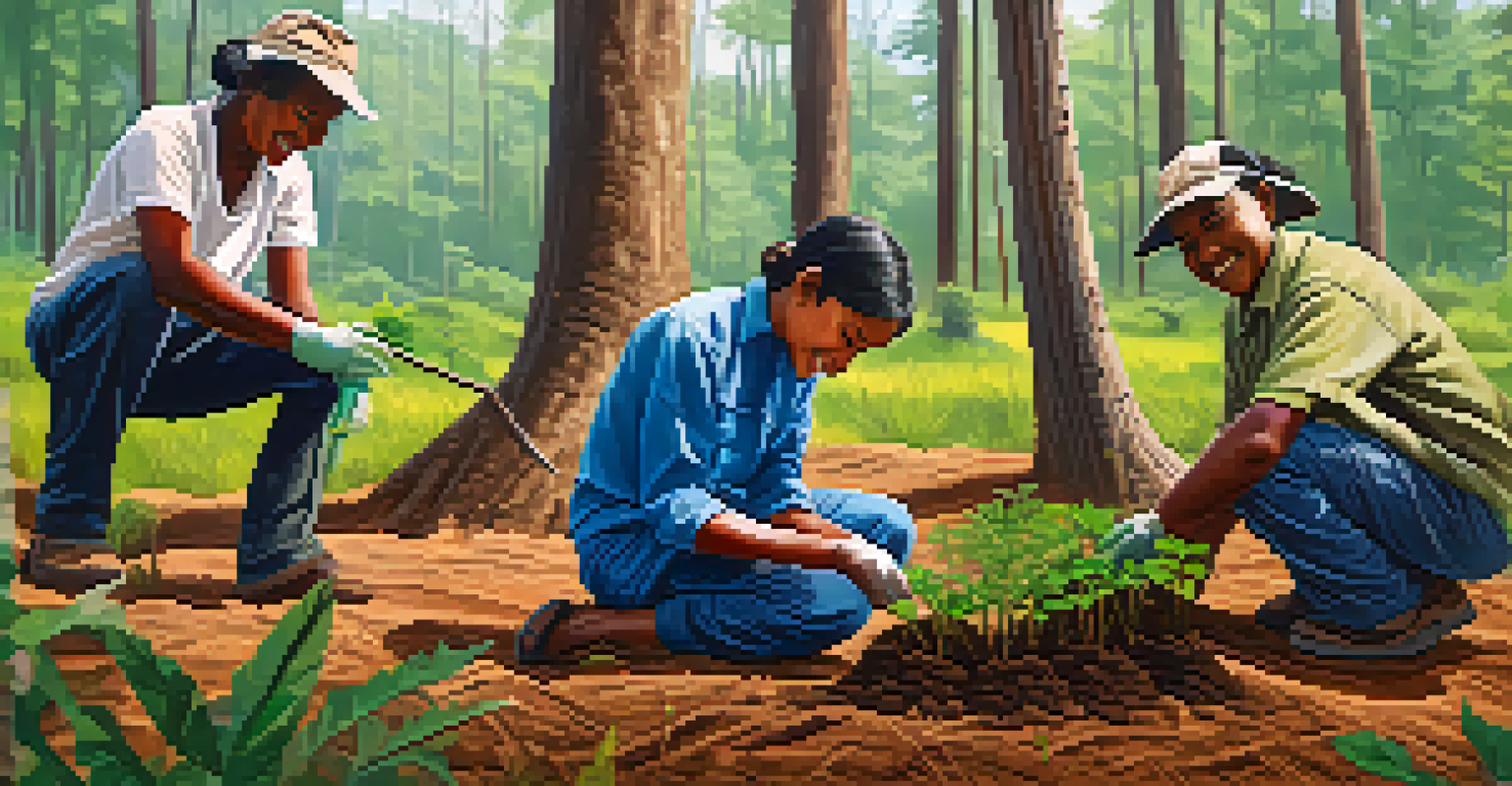Wildlife Conservation and Sustainable Tourism in Peru

Understanding Peru's Unique Biodiversity
Peru is home to an astonishing array of wildlife, boasting over 1,800 species of birds and countless mammals, reptiles, and insects. This rich biodiversity is primarily due to its varied ecosystems, from the Amazon rainforest to the Andes mountains. For instance, the country's diverse habitats support unique species like the iconic Andean condor and the endangered jaguar.
The future will be shaped by the choices we make today, and we must choose to protect our planet and its biodiversity.
The importance of this biodiversity cannot be overstated; it plays a vital role in ecological balance and supports local communities. Wildlife contributes to ecosystem services such as pollination and pest control, essential for agriculture. By protecting these species, Peru also preserves its cultural and natural heritage, attracting researchers and tourists alike.
However, this incredible biodiversity faces threats from deforestation, illegal hunting, and climate change. Conservation efforts are crucial to mitigate these risks and ensure that future generations can experience Peru's natural wonders. The challenge then lies in balancing these efforts with the growing demand for tourism.
The Role of Sustainable Tourism in Conservation
Sustainable tourism offers a pathway for conservation by promoting responsible travel practices that benefit both wildlife and local communities. This approach encourages tourists to engage with nature in a way that minimizes their impact, such as using eco-friendly accommodations and respecting wildlife habitats. For example, visiting eco-lodges in the Amazon helps fund conservation projects while providing jobs for local residents.

Moreover, sustainable tourism fosters awareness and appreciation for biodiversity. When travelers learn about endangered species and the challenges they face, they are more likely to support conservation initiatives. Engaging with local guides who share their knowledge about the ecosystem enhances the experience and encourages visitors to become advocates for wildlife protection.
Peru's Biodiversity is Remarkable
With over 1,800 bird species and various unique mammals, Peru's diverse ecosystems play a crucial role in ecological balance and local livelihoods.
However, the growth of tourism must be managed carefully to avoid over-exploitation of natural resources. Implementing strict regulations and promoting education can help ensure that tourism contributes positively to conservation efforts rather than detracting from them.
Community Involvement in Conservation Efforts
Local communities play a critical role in wildlife conservation and sustainable tourism in Peru. When communities are involved in conservation efforts, they are more likely to protect their natural resources. For instance, initiatives that empower indigenous groups to manage their lands have led to successful outcomes in preserving habitats and wildlife.
Conservation is a state of harmony between men and land.
By integrating local knowledge and practices into conservation strategies, projects can be more effective. Communities often have a deep understanding of their environment and can offer valuable insights into sustainable practices. This collaboration fosters a sense of ownership and responsibility, motivating locals to safeguard their wildlife.
Additionally, community-based tourism initiatives can provide economic incentives for conservation. By attracting tourists to experience local culture and nature, communities can generate income while preserving their environment. This win-win situation highlights the importance of collaboration between conservationists, tourists, and local populations.
Iconic Conservation Projects in Peru
Peru is home to numerous conservation projects that serve as models for sustainable tourism. One such initiative is the Tambopata National Reserve, which focuses on protecting the biodiversity of the Amazon rainforest. Here, eco-tourism ventures allow visitors to explore the reserve while funding vital conservation efforts.
Another notable project is the Manú National Park, recognized as a UNESCO World Heritage site. This park is a biodiversity hotspot, and its conservation approach combines scientific research with eco-friendly tourism. By attracting responsible travelers, the park generates revenue that supports ongoing conservation activities.
Sustainable Tourism Supports Conservation
Responsible travel practices not only benefit wildlife but also empower local communities by funding conservation initiatives.
These projects demonstrate the potential of sustainable tourism to enhance conservation efforts. By showcasing the beauty and importance of Peru's ecosystems, they inspire visitors to contribute to wildlife protection while enjoying unique experiences.
Challenges Facing Wildlife Conservation in Peru
Despite the successes in wildlife conservation, Peru faces significant challenges. Deforestation, primarily driven by illegal logging and agriculture, threatens vast areas of natural habitat. This loss not only endangers countless species but also disrupts local communities that rely on these ecosystems for their livelihoods.
Additionally, poaching and illegal wildlife trade pose serious threats to endangered species. Animals like the jaguar and the giant river otter are at risk due to hunting and habitat loss. Combating these issues requires coordinated efforts from government agencies, NGOs, and local communities.
Finally, climate change continues to impact biodiversity. Rising temperatures and changing rainfall patterns can alter habitats and species distribution. Addressing these challenges will require innovative solutions and a commitment to long-term conservation strategies.
The Impact of Climate Change on Biodiversity
Climate change is a looming threat to wildlife conservation efforts in Peru, affecting both ecosystems and the species that inhabit them. As temperatures rise and precipitation patterns shift, many species struggle to adapt to their changing environments. This can lead to decreased populations and even extinction for some vulnerable species.
For example, the Andean condor, which relies on specific habitats for breeding and feeding, may find its range shrinking due to climate impacts. Such changes highlight the interconnectedness of ecosystems and the need for adaptive conservation strategies that consider the effects of climate change.
Community Involvement is Essential
Engaging local communities in conservation efforts fosters ownership and enhances the effectiveness of wildlife protection strategies.
Moreover, climate change can exacerbate existing threats, such as deforestation and habitat fragmentation. It's crucial for conservation initiatives to incorporate climate resilience into their plans, ensuring that wildlife and ecosystems can withstand future challenges.
How Tourists Can Contribute to Conservation
Tourists can play a significant role in supporting wildlife conservation efforts in Peru. By choosing eco-friendly tour operators and accommodations, travelers can ensure that their money contributes to conservation initiatives and local communities. For instance, selecting a tour that includes wildlife monitoring or habitat restoration can directly benefit the environment.
Moreover, responsible tourism involves being mindful of one’s impact on nature. Simple actions, such as staying on marked trails and avoiding littering, help protect fragile ecosystems. Tourists can also educate themselves about local wildlife and cultural practices, fostering a deeper appreciation for the region they are visiting.

Lastly, travelers can support conservation organizations by donating or volunteering during their visit. Engaging with local conservation projects not only enriches the travel experience but also makes a positive difference in preserving Peru's incredible biodiversity.